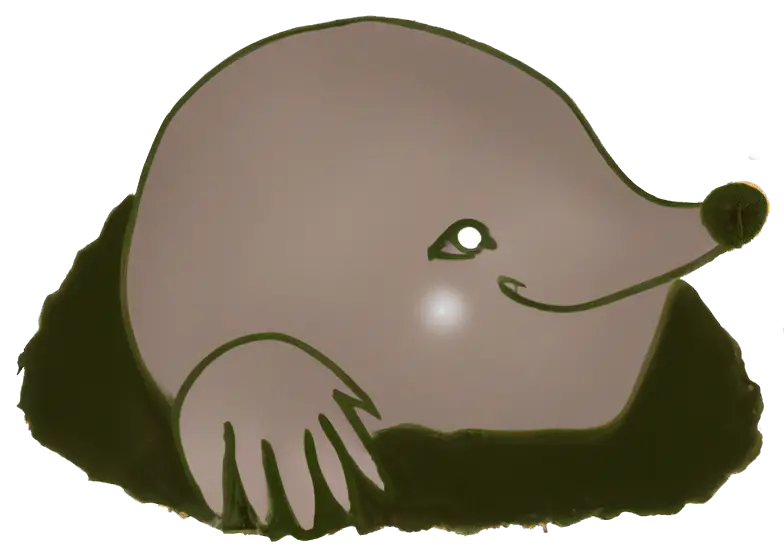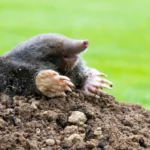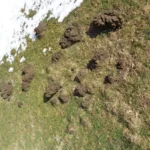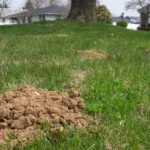Have you ever noticed unsightly molehills popping up all over your yard? These burrowing critters can wreak havoc on your lawn and garden, leaving you scratching your head for a solution. While some people turn to chemical repellents or traps to get rid of moles, there’s a more natural solution that can also benefit your local ecosystem. Attracting natural mole predators to your yard can be an effective and sustainable way to control the mole population without harming these beneficial animals. In this article, we’ll explore the various natural predators of moles and provide step-by-step tips for attracting them to your yard.
Why Attract Natural Mole Predators?
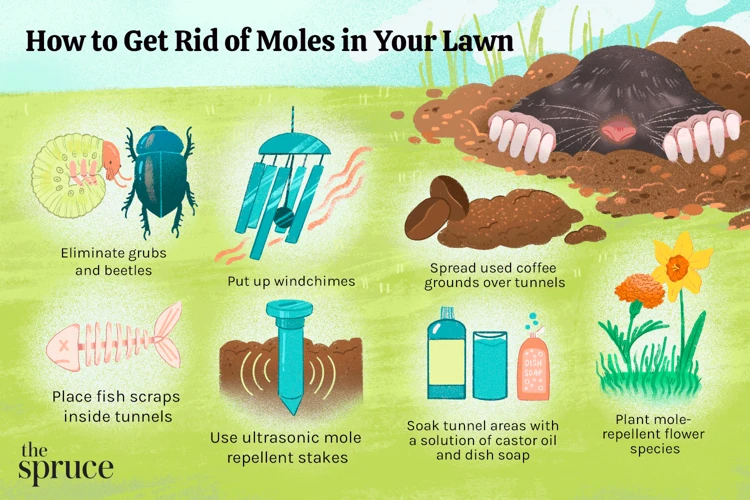
As a homeowner, you may have spent countless hours trying to eradicate pesky moles from your yard, but have you considered attracting natural mole predators to do the job for you? Attracting natural mole predators has become a popular and effective way to control the mole population without resorting to harmful chemicals or traps. Not only is it an environmentally-friendly solution, but it can also improve the overall biodiversity of your yard. In this guide, we will explore various natural mole predator species, the benefits of attracting them, and how to create a wildlife-friendly yard that encourages their presence. For more information on the benefits and risks of predator control in yard, check out our article “Benefits and Risks of Predator Control for Mole Control”.
Understanding Natural Mole Predators
Natural mole predators are animals that are known to feed on moles as part of their diet. Knowing these predators is crucial when trying to attract them to your yard. Birds of prey such as owls, hawks, and eagles are some of the most effective natural mole predators. These birds have excellent eyesight and can spot the movement of moles from high up in the air. They swoop down and catch the moles with their sharp talons.
Dogs and cats are also natural mole predators. Dogs, especially breeds like terriers and dachshunds, were originally bred for hunting small animals like moles. Their keen sense of smell and hunting instincts make them effective mole hunters. Cats, on the other hand, are natural predators that hunt anything that moves. They are effective mole hunters and have been known to catch and kill moles in yards.
Molesnakes are another type of natural mole predator. As their name suggests, these are snakes that primarily feed on moles. They are non-venomous and harmless to humans, but they can be very effective in controlling mole populations in yards. Molesnakes are also very good at burrowing and can follow moles into their tunnels to catch them.
Badgers are known for their digging and burrowing abilities. These carnivorous mammals are also natural mole predators. They use their sharp claws to dig in the ground and catch moles in their tunnels. Badgers are primarily nocturnal and can be seen roaming around at night in search of food.
Foxes are also some of the most effective natural mole predators. These omnivores are known for their sharp senses and can easily detect the presence of moles in yards. Foxes are also known to eat small rodents and insects, making them effective at controlling mole populations.
Owls are another type of bird of prey that are effective natural mole predators. These nocturnal birds have excellent night vision and can silently swoop down on moles in yards. Owls are beneficial to have in yards because they also feed on other pests like mice and rats.
Understanding the natural mole predators is crucial when planning to attract them to your yard. By knowing their characteristics and behaviors, you can create an environment that is conducive to their presence. However, it is important to note that attracting predators may have an impact on other wildlife in your yard. Check out this article on predator control impact on wildlife in yard to learn more.
Benefits of Attracting Natural Mole Predators
Attracting natural mole predators to your yard is not only beneficial for your garden but also for the overall ecological balance of the area. By providing a suitable environment for these predators, you can enjoy a healthier and more natural garden. Here are some of the benefits of attracting natural mole predators:
- Effective mole control: Natural mole predators are a highly effective method of controlling moles in your yard. While mole traps can be useful, they can only get a few moles at a time. On the other hand, natural predators can hunt and control moles at a much faster rate, resulting in better mole control overall.
- No harm to non-targeted species: Attracting natural mole predators is a safe and humane alternative to using chemical or poisonous methods for controlling moles. Unlike other methods, which can harm non-targeted species and damage the environment, attracting natural predators is a more eco-friendly option.
- Improved soil quality: Moles aerate the soil as they tunnel through it. However, their tunnels can also cause problems with soil compaction, drainage, and erosion. Natural predators can help control the mole population and alleviate these issues, leading to healthier soil and plants.
- Natural balance: Attracting natural predators to your yard can help maintain a healthy ecological balance. When mole populations get out of control, they can damage the plant life and even attract more pests. Natural predators can help keep mole populations in check, preventing them from causing further harm to your garden.
- Aesthetic appeal: Finally, a well-maintained garden with a healthy predator/prey balance is more aesthetically pleasing. Attracting natural mole predators can help improve the look of your yard by reducing mole hills and tunnels, which can create a more polished and pristine look.
Attracting natural mole predators is a win-win situation for both you and the environment. Not only does it create a more natural and healthy garden, but it is also an effective and humane method of controlling moles. So, whether you want to attract birds of prey or other predators to your yard, it is worth considering.
Identifying Natural Mole Predators

One way to combat mole damage in your yard is to attract natural mole predators. But do you know what animals are considered natural mole predators? Let’s take a closer look at some of the creatures that can help you with your mole problem. By identifying them, you can take steps to encourage them to visit your yard and keep moles at bay. Among the natural mole predators are some of the most stunning and impressive birds of prey, such as eagles and hawks, as well as domestic animals that most of us already own, like dogs and cats. Other options are molesnakes, badgers, and foxes. Owls are also a useful predator to have around. Let’s take a closer look at each of these predators and explore how they can help solve your mole problem.
Birds of Prey
Birds of Prey:
Birds of prey are one of the most effective natural predators of moles. They have sharp talons and beaks that make them skilled hunters. They also have excellent vision, which helps them to spot small rodents and insects from the air. Some common examples of birds of prey that can be attracted to your yard for natural mole control include:
| Bird of Prey | Description | Benefits |
|---|---|---|
| Red-Tailed Hawk | A large hawk with rusty red tail feathers and a wingspan of up to four feet. | Excellent vision and hunting skills. |
| Screech Owl | A small owl with tufted ears and a wingspan of up to two feet. | Nocturnal hunters that hunt for prey during the night. |
| Cooper’s Hawk | A medium-sized hawk with a blue-gray back and a rusty-red breast. | Catches prey in trees and shrubs, which makes it ideal for hunting moles. |
To attract birds of prey to your yard, create a wildlife-friendly environment that provides shelter and food. Planting trees and shrubs can create a habitat for birds to live and nest. Additionally, providing a bird feeder with seed and suet can provide a reliable source of food for them. It’s also important to avoid using pesticides, which can harm the birds and the insects they feed on.
Want to learn more about natural mole control using predator urine? Check out our article on predator urine deter moles.
Dogs and Cats
While dogs and cats are often thought of as household pets, they can also be valuable in controlling moles that may be invading your yard. Most breeds of dogs will instinctively hunt small rodents like moles, and cats are known for their agility and hunting abilities.
However, it is important to note that not all dogs or cats may be effective in mole control, and some may even cause damage to your yard while trying to catch them. It is also important to ensure that your pets do not accidentally ingest any toxic mole control products.
Here is a table summarizing the pros and cons of using dogs and cats for natural mole control:
| Pros | Cons |
|---|---|
| Effective hunters of small rodents like moles | May cause damage to yard while hunting |
| Natural and non-toxic method of control | Not all breeds of dogs or cats may be effective |
| May already be present in your household | Pets may accidentally ingest toxic mole control products |
Using dogs and cats as natural mole predators can be a viable option for controlling mole populations in your yard, as long as you take the necessary precautions and understand the limitations of using household pets for this purpose. For more information on other natural mole predators, consider checking out our article on birds of prey for mole control.
Molesnakes
Molesnakes, also known as garter snakes, are a common natural predator of moles. These snakes can be found in almost any part of the world and are known for their small size, making them perfect for hunting moles.
Identification: Molesnakes are small to medium-sized snakes, usually ranging from 1 to 4 feet long. They have stripe patterns on their body, which can vary in color based on their habitat.
Diet: Molesnakes primarily feed on small rodents, insects, and earthworms, but they are also known to hunt moles.
Habitat: Molesnakes can be found in a variety of habitats, including forests, fields, and grasslands. They are most commonly found in areas with moist soil, such as near streams, ponds, and wetlands.
Behavior: Molesnakes are active during the day and prefer to hunt on the ground. They are excellent climbers and swimmers, giving them the ability to hunt in a variety of environments.
Attracting: To attract molesnakes, it’s best to create a wildlife-friendly yard with a variety of plant species and a reliable water source. Installing nesting boxes and providing shelter under rocks or logs can also help attract them to your yard. Additionally, avoiding the use of pesticides and using natural repellents can help keep molesnakes around.
Molesnakes are an excellent natural predator of moles and can be easily attracted to your yard with a few simple steps. However, it’s important to remember that they are still a snake and should be respected from a safe distance.
Badgers
Badgers are another option for natural mole predators. They are omnivorous and will feed on a variety of foods, including small mammals like moles. If you live in an area with badger populations, they may naturally control mole populations in your yard.
Here are some ways to attract badgers to your yard:
- Ensure there is a constant supply of water for them to drink and bathe in.
- Provide small foods such as worms and grubs for them to snack on as they search for prey.
- Make sure there is a safe and warm place for them to sleep, like a brush pile or a badger den.
- Avoid using pesticides, as badgers are highly sensitive to them and can be killed by them.
Remember to be cautious around badgers, as they can become aggressive if they feel threatened. It is also important to check with your local wildlife agency before attempting to attract badgers to your yard, as they may have specific regulations regarding their protection. If badgers are not an option in your area or you do not feel comfortable attracting them, there are many other natural mole predators that can be invited into your yard.
Foxes
Foxes are another natural predator of moles that can help keep your yard free of these pests. Here are some ways you can attract foxes to your yard:
- Provide food: Foxes are omnivores and eat a variety of foods such as insects, fruits, vegetables, and small mammals. By providing food that foxes like, such as chicken scraps, fruits, and vegetables, you can attract them to your yard.
- Create shelter: Foxes need a place to feel safe and secure. By providing shelter, such as brush piles, old logs, or a den made out of an old box or hollow log, you can create a welcoming environment for foxes.
- Offer water: Like all animals, foxes need water to survive. By providing a water source, such as a small pond or bird bath, you can help attract them to your yard.
- Allow access: Foxes need easy access to your yard. By installing a low fence or removing any obstacles, you can make it easier for them to enter your yard.
- Keep pets indoors: Foxes will stay away if they sense danger. By keeping your pets indoors at night, you will reduce the risk of scaring off foxes.
- Avoid using pesticides: Foxes may be sensitive to pesticides, which could harm them or reduce the availability of their prey.
If you follow these steps, you may find foxes visiting your yard in no time. Remember to always respect wildlife and never approach or disturb them.
Owls
Owls are another great natural predator of moles that can be attracted to your yard. Owls are nocturnal birds of prey that hunt small mammals, including moles. They have keen eyesight and hearing, allowing them to locate moles even when they are underground.
To attract owls to your yard, you should create a wildlife-friendly environment. This can be accomplished by providing nesting boxes and perches. Owls prefer to nest in tree cavities or in nest boxes that are placed high off the ground. These boxes should be installed at least 10 feet off the ground and away from any sources of disturbance, such as highways, loud machinery or bright street lights.
Owls are also attracted to areas where there is an abundance of food. You can encourage their presence by planting native shrubs and plants that attract insects and small mammals. Installing a small pond can also attract insects and amphibians that owls hunt for food. Remember to avoid the use of pesticides, as they can kill the insects that owls depend on for food.
It is important to make sure that your yard is free from any hazards that might cause injury or harm to the owls. Ensure that your yard is free of any sharp objects, such as nails or wire, and limit the use of chemicals that could be harmful to the owls or their food sources.
By creating a welcoming environment for owls, you can help to keep moles at bay in a natural and environmentally-friendly way.
| How to attract owls to your yard: |
| Create a wildlife-friendly environment |
| Install nesting boxes and perches |
| Plant native shrubs and plants that attract insects and small mammals |
| Install a small pond to attract insects and amphibians |
| Avoid the use of pesticides |
| Ensure the yard is free from any hazards |
How to Attract Natural Mole Predators
Now that we know how important it is to attract natural mole predators to our yard, let’s explore some effective ways of doing so. From creating a wildlife-friendly environment to providing food and shelter, there are several steps you can take to entice these helpful creatures to your yard. Read on to discover some practical and eco-friendly methods for attracting natural mole predators and keeping your garden healthy and thriving.
Create a Wildlife-Friendly Yard
Creating a wildlife-friendly yard is essential to attract natural mole predators. To do so, you can follow these steps:
- Plant Native Plants: Native plants are an excellent food source and shelter for natural mole predators. They can attract birds, insects, and other small animals that make up the diets of natural mole predators.
- Minimize Chemical Use: Chemicals such as fertilizers and herbicides can be harmful to natural mole predators. When possible, use natural pest control methods such as integrated pest management.
- Provide Water: Natural mole predators need a source of water, especially in dry weather. Consider adding a bird bath or water feature to your yard.
- Include a Variety of Vegetation: Having a diverse range of vegetation in your yard provides many benefits to natural mole predators. Shrubs, trees, and grasses can provide shelter, food, and breeding grounds.
- Create a Brush Pile: A brush pile creates a safe haven for natural mole predators, giving them a place to hide and rest. You can use fallen branches, leaves, and other yard waste to create the brush pile.
- Provide Nesting Boxes: Nesting boxes can provide safe and secure shelter for natural mole predators such as birds and owls.
- Ensure Safe Access: Make sure your yard is safe for natural mole predators to access. Remove any fences or barriers that may prevent them from entering your yard.
By creating a wildlife-friendly yard, you can attract natural mole predators and help control the mole population in a natural and non-harmful way.
Provide Shelter and Food
To successfully attract natural mole predators to your yard, providing shelter and food is crucial. Different predators have specific needs when it comes to habitat and diet. By catering to their needs, you can increase the likelihood of attracting them to your yard. Here are some examples:
| Predator | Shelter | Food |
|---|---|---|
| Owls | Tree cavities or nesting boxes | Small rodents, such as mice and voles |
| Badgers | Underground burrows or dens | Small mammals and invertebrates, such as earthworms and beetles |
| Dogs and Cats | A cozy bed or sheltered area | Dry or wet pet food, or high-protein treats, such as cooked chicken or beef |
Providing shelter can be as simple as installing nesting boxes for birds or allowing an area of your yard to go wild for ground-based predators like badgers. Additionally, having a diverse range of plants and trees can provide housing for birds and smaller creatures, which in turn can attract foxes and other predators.
When it comes to food, predators have different tastes. Owls and birds of prey prefer small rodents and insects, while badgers and foxes enjoy small mammals and invertebrates like earthworms and beetles. For pets like dogs and cats, providing them with high-quality, high-protein food can help them maintain their strength and hunting ability.
By providing the right type of shelter and food, you can create an inviting habitat for natural mole predators in your yard. This will not only help control the mole population but also contribute to a balanced ecosystem.
Leave Your Pets Out
When attempting to attract natural mole predators to your yard, it is important to keep in mind that domestic pets can pose a threat to these beneficial creatures. In order to create a wildlife-friendly environment, it is best to leave your pets out of the equation. Here are some reasons why:
- Prey Instincts: Many household pets such as cats and dogs have prey instincts that can run counter to the goal of attracting natural mole predators. These instincts could lead to them hunting and killing the very creatures that you are trying to lure into your yard.
- Noise: The barking and meowing of domestic pets can scare away natural mole predators. After all, these predators are generally looking for a quiet and peaceful environment in which to hunt for prey.
- Disturbance: Domestic pets can disrupt the natural habitat of mole predators. As such, it is best to avoid having pets running around or digging up the ground, as this could scare them away.
By leaving your pets out of the equation, you can create a more natural environment that is conducive to attracting mole predators. This, in turn, will lead to a healthier ecosystem in your yard overall.
Install Nesting Boxes
One effective way to attract natural mole predators to your yard is by installing nesting boxes. These boxes will provide shelter and a safe space for predators to rest in between hunting for their meal. Here are some tips on how to install nesting boxes:
| Step | Description |
|---|---|
| 1 | Research different types of nesting boxes that are suitable for the type of predator you want to attract. Some examples include owl boxes, bat boxes, and bird boxes. |
| 2 | Install the nesting box in a quiet and secluded area of your yard, preferably in a spot where it won’t be disturbed by pets or humans. |
| 3 | Make sure the nesting box is at the appropriate height for the species you want to attract. For example, a barn owl box should be around 12-15 feet off the ground, while a bat box should be lower to the ground, around 6-8 feet. |
| 4 | Provide bedding material inside the box, such as wood shavings or straw, to make it more comfortable for the predator. |
| 5 | Monitor the nesting box to make sure it is being used and to keep it clean. Remove any old bedding material and replace it with fresh material regularly. |
By installing nesting boxes, you provide a welcoming environment for natural mole predators to thrive in your yard. This will help naturally control mole populations without having to resort to harmful chemicals or trapping methods.
Use Pet Waste as Bait
Using pet waste as bait can be an effective way to attract natural mole predators to your yard. However, it is important to note that this method should only be used with caution and in a controlled manner, as pet waste can carry harmful bacteria that can affect the health of both wildlife and humans if not properly managed. Here are some tips on how to use pet waste as bait for attracting natural mole predators while also ensuring the safety of your pets and the environment:
- Choose the right type of pet waste: Not all pet waste is created equal. It’s recommended to use waste from carnivorous pets, such as dogs and cats, as they are more likely to contain the scents and pheromones that attract natural mole predators.
- Place the pet waste strategically: Place small amounts of pet waste near areas where mole activity has been observed, such as burrows or tunnels. Be sure to avoid placing it near vegetable gardens or other areas where you don’t want predators to frequent.
- Monitor the bait: Check the bait regularly to ensure that it is being consumed by natural mole predators and not other wildlife, such as raccoons or squirrels. Remove any remaining pet waste after a few days to prevent the buildup of harmful bacteria.
- Dispose of the waste properly: Once the pet waste has been used as bait, dispose of it in a responsible manner. Bag it and place it in the trash, or consider composting it in a separate area away from your garden or other areas where you don’t want predators to frequent. Never dispose of pet waste in water sources or other areas where it can contaminate the environment.
Using pet waste as bait can be an effective way to attract natural mole predators to your yard, but it should be done with care and caution to ensure the safety of both wildlife and humans. By following these tips and being responsible with your pet waste management, you can help create a more natural and wildlife-friendly environment in your yard.
Allowing Access to Soil
Allowing Access to Soil is one of the essential steps in attracting natural mole predators to your yard. To create an inviting environment for these predators, you need to make sure that they have easy access to the soil where moles are living. Here are some ways to accomplish this:
- Limit the use of turf grass: Turf grass is a popular ground cover, but it prevents predators such as badgers and foxes from digging for prey. Consider planting other types of ground cover, such as clover or low-growing flowers to encourage predators to explore the soil.
- Provide a clear pathway: Clear a natural path through your yard, allowing predators to see and access mole tunnels.
- Remove barriers: Natural predators may struggle to access your yard if it’s blocked by fences or walls, making it difficult to dig through. Consider building a small opening or removing the barrier entirely to promote access.
Taking steps to allow for natural predators to access the soil can lead to a healthy ecosystem in your backyard. However, it’s important to remember to maintain a safe environment for both the predators and other animals in your yard.
Planting Daffodils and Alliums
Planting Daffodils and Alliums
Daffodils and alliums are beautiful flowers that can also help attract natural mole predators to your yard. Planting them not only adds color to your landscape but also encourages predatory animals to stay and help with mole control.
Here are some tips for planting daffodils and alliums:
- Choose the right location: Daffodils and alliums should be planted in well-draining soil with plenty of sunlight. They can thrive in a variety of soil types but prefer slightly acidic soil.
- Plant in the fall: Daffodils and alliums should be planted in the fall before the first frost. This gives the bulbs enough time to establish roots before winter and bloom in the spring.
- Plant in groups: Plant daffodils and alliums in groups of at least 10 to create a larger impact and attract more predators.
- Plant deep: Dig a hole that is at least twice as deep as the bulb and place it with the pointed end facing up. Cover with soil and pack it down to ensure it stays in place.
- Water regularly: Water the bulbs immediately after planting and then regularly throughout the fall and winter. Stop watering in the spring when the flowers begin to bloom.
Remember to also provide shelter and food for your natural mole predators to encourage them to stick around and help control the mole population in your yard.
Start a Compost Pile
One effective way to attract natural mole predators to your yard is by starting a compost pile. Composting is the process of breaking down organic materials into nutrient-rich soil, which can then be used to fertilize your garden or lawn. This practice not only benefits your soil, but it can also help attract natural mole predators to your yard, as they are often drawn to areas with high levels of organic matter.
Why is a compost pile attractive to natural mole predators?
Moles are often attracted to environments with abundant soil-dwelling insects, such as earthworms, grubs, and beetles. These insects are commonly found in healthy soils, which are often the result of regular applications of organic matter, such as compost. By starting a compost pile in your yard, you can create an environment that is attractive to these insects, which, in turn, can attract natural mole predators.
How to start a compost pile
Starting a compost pile is easy and inexpensive. All you need is a designated area in your yard, such as a corner or edge that is out of the way, and a few basic materials. Here are the steps to starting a compost pile:
| Step 1: Choose a location | Find an area in your yard that is convenient, but out of the way. It’s best to choose a spot that gets some sun, but is also protected from strong winds. |
| Step 2: Gather materials | Collect organic materials such as fruit and vegetable scraps, grass clippings, leaves, and coffee grounds. |
| Step 3: Layer the materials | Begin layering the organic materials in your designated area. First, add a layer of leaves or twigs to improve air circulation. Next, add a layer of brown materials, such as dried leaves or straw, followed by a layer of green materials, such as food scraps and grass clippings. Repeat this layering process until your pile is about 3-4 feet tall. |
| Step 4: Water and turn the pile | Water your compost pile regularly to keep it moist, but not saturated. You can also turn your pile every few weeks using a pitchfork or shovel to help speed up the composting process. |
| Step 5: Add to your garden or lawn | Once your pile has broken down into nutrient-rich soil, you can add it to your garden or lawn to improve soil quality and attract natural mole predators. |
By following these steps, you can start a compost pile in your yard and create an environment that is attractive to natural mole predators. Additionally, adding compost to your garden or lawn can help improve soil quality and promote healthy plant growth.
Build a Small Pond
A small pond in your yard can be highly effective in attracting natural mole predators. It can act as a water source for birds and other animals that feed on moles, including snakes, badgers, and foxes. Here are some details on how to build a small pond:
| Step | Description |
|---|---|
| Step 1: | Find a suitable location for your pond. It is best to choose a spot that is shady for part of the day so that the water doesn’t evaporate too quickly in the sun. |
| Step 2: | Mark out the shape of your pond using stakes and string. Make it as shallow or as deep as you want, but consider that a depth of at least 18 inches will allow for a good range of aquatic plants and critters that can keep the pond balanced. |
| Step 3: | Excavate the area to the depth and shape you have marked out. Remove any rocks or clumps of soil that could puncture the pond liner. |
| Step 4: | Line the hole with a pond liner made of rubber, PVC or another suitable material. These liners are available at most hardware or gardening stores. Make sure that the liner is properly secured to prevent any leaks. |
| Step 5: | Add a layer of sand or soft soil to the bottom of the hole to prevent the liner from being punctured by any rocks or debris. |
| Step 6: | Fill the pond with water using a garden hose. Add dechlorinator (if you are using tap water) and a water conditioner (if you want to adjust the pH), making sure to follow the instructions provided. |
| Step 7: | Plant vegetation around and in the pond to provide habitat and life to attract predators and others guests to the site. See Planting Daffodils and Alliums section for some ideas on plants that can help attract moles predators. |
Keep in mind that it will take time for a new pond to establish a balanced ecosystem, so be patient and allow natural processes to occur. Once your pond has attracted natural mole predators, you can watch them go to work on your mole problem.
Avoid Using Pesticides
Using pesticides to control moles may seem like a quick solution to the problem, but it is not a recommended strategy. Not only do pesticides harm the environment and the animals living in it, but they can also harm humans and other animals that come into contact with them, including your pets. It is always wise to explore natural alternatives to pest control.
Reasons to avoid using pesticides for mole control:
| Reasons | Explanation |
| Environmental impact | Pesticides can harm other wildlife and pollute the soil and water supply. |
| Health concerns | Humans and other animals can come into contact with pesticides, which can cause illness, respiratory problems, and other health issues. |
| Toxicity to pets | Pets can accidentally ingest pesticides, leading to poisoning and potentially fatal consequences. |
| Short-term solution | Pesticides only provide a temporary fix to the underlying problem and may not address the root cause of the infestation. |
It is best to avoid using pesticides to control moles or any other pests in your yard. Instead, use natural methods that are safer for the environment and for the animals and humans living within it.
Use Natural Repellents
Using natural repellents is a safe and humane way to deter moles from your yard. There are various natural repellents that you can use, such as:
- Castor Oil: moles hate the smell of castor oil, and it can be an effective way to keep them out of your yard. You can mix castor oil with water and spray it on your lawn or garden.
- Vibration Devices: these devices produce vibrations that irritate the moles and make it uncomfortable for them to stay in the area. They can be placed in various locations around your yard.
- Mothballs: the odor of mothballs is unpleasant to many animals, including moles. You can place them near mole tunnels or in strategic areas around your yard.
- Spicy Substances: moles dislike the smell of spicy substances like cayenne pepper and garlic. You can mix these spices with water and spray them around your yard.
- Ultrasonic Devices: these devices produce high-frequency sounds that are uncomfortable for moles and can deter them from your yard.
It is important to note that while natural repellents can be effective, they may not work for every situation. It is also important to use them in combination with other measures, such as creating a wildlife-friendly yard and avoiding the use of pesticides. Additionally, if you have pets or children, make sure to use natural repellents that are safe for them. Using natural repellents can be an effective way to deter moles from your yard while also being safe for the environment and wildlife.
Have Regular Lawn Maintenance
One of the most important steps to attracting natural mole predators to your yard is to have regular lawn maintenance. This is because an overgrown and unkempt lawn can attract unwanted pests that may deter natural predators from coming to your yard.
Here are some lawn maintenance tips:
- Regularly mow your lawn to keep it at a manageable height
- Remove any fallen leaves or debris that may accumulate in your yard
- Trim any bushes or hedges to keep them neat and tidy
- Regularly rake your lawn to remove any dead grass or thatch
- Use a fertilizer that is natural and non-toxic to keep your lawn healthy
By having a well-maintained lawn, you are not only making it more attractive to natural mole predators, but you are also creating a space that is more conducive to all kinds of wildlife.
Having a lawn that is well-maintained can also improve the overall aesthetics of your yard. A well-manicured lawn is not only pleasant to look at, but it also creates a more inviting space for your family and guests to enjoy.
So, make sure to take the time to regularly maintain your lawn to ensure that you are creating an environment that is both functional and visually appealing.
Conclusion
After following the steps outlined in this guide, you should have successfully attracted natural mole predators to your yard. However, it’s important to note that this process may take time and patience. It’s also crucial to understand that natural control is not a quick fix, and it may not completely eliminate mole infestations.
By creating a wildlife-friendly yard and providing shelter and food for natural mole predators, you are not only controlling moles, but also promoting a healthy and diverse ecosystem in your yard. Using pesticides or other harmful methods to control moles could have negative consequences on the environment and the overall health of your yard.
Remember to regularly maintain your yard and avoid leaving pet waste out, as it can attract unwanted pests. By incorporating natural repellents, planting daffodils and alliums, and building a small pond, you can further attract natural predators to your yard while also adding beauty to your outdoor space.
Overall, attracting natural mole predators is a sustainable and effective way to control mole infestations in your yard. By following the steps outlined in this guide, you can create a vibrant and thriving environment for both your natural predators and your yard’s flora and fauna.
Frequently Asked Questions
What are some signs that moles are present in my yard?
Some indications of the presence of moles in your yard include raised ridges and tunnels across your lawn, soil mounds, and damage to your plants’ roots.
How can I tell if a bird of prey is a natural mole predator?
Birds of prey such as hawks and owls are natural mole predators. You can distinguish them from other birds by their hooked beaks and sharp talons.
Can I use my own pets to help eliminate moles?
Dogs and cats can sometimes be natural mole predators, but they may also harm other wildlife. Additionally, they can dig up your yard and cause more damage than good.
What is the benefit of attracting natural mole predators to my yard?
Attracting natural mole predators to your yard can help reduce the number of moles and minimize the damage they cause to your lawn and garden.
How do I create a wildlife-friendly yard that attracts natural mole predators?
You can create a wildlife-friendly yard by providing natural habitats and food sources for predator animals, reducing pesticide use, and making your yard safe for wildlife.
What is the best way to discourage moles from returning to my yard?
One way to discourage moles from returning is to use natural repellents such as castor oil or planting daffodils and alliums, which moles find unappealing.
Is it harmful to use pesticides to eliminate moles?
Using pesticides can be harmful to the environment and other wildlife. It’s best to use natural methods to control the mole population in your yard.
What should I do if I come across a badger in my backyard?
If you come across a badger in your backyard, it’s best to observe it from a distance and avoid startling it. Badgers are unlikely to attack humans unless they feel threatened.
How can I provide shelter for natural mole predators in my yard?
You can provide shelter for natural mole predators by creating habitats such as nesting boxes or allowing access to soil for burrowing animals.
What is the best way to start a compost pile in my yard?
The best way to start a compost pile is to select an area with good drainage, add a layer of brown and green organic materials, and keep it moist and well-aerated.
